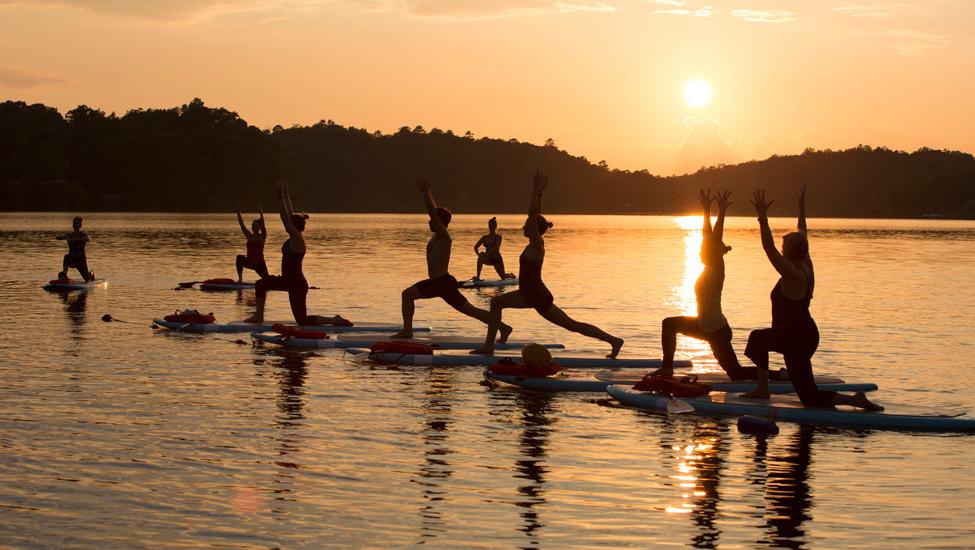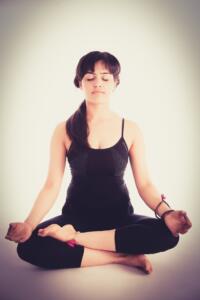
Are you someone who enjoys yoga on the boat dock? If you’re feeling like taking on a new lake hobby, consider SUP yoga. An acronym for Stand Up Paddleboard yoga, this activity refers to standing up on a paddleboard in a body of water. Typically, this sport is practiced in calmer bodies of water such as lakes or harbors. SUP yoga has become a trending activity in recent years, embraced both by yogis and paddleboarders alike. Today, we’re going to be answering some common questions about SUP yoga on the lake.
What exactly is SUP yoga?
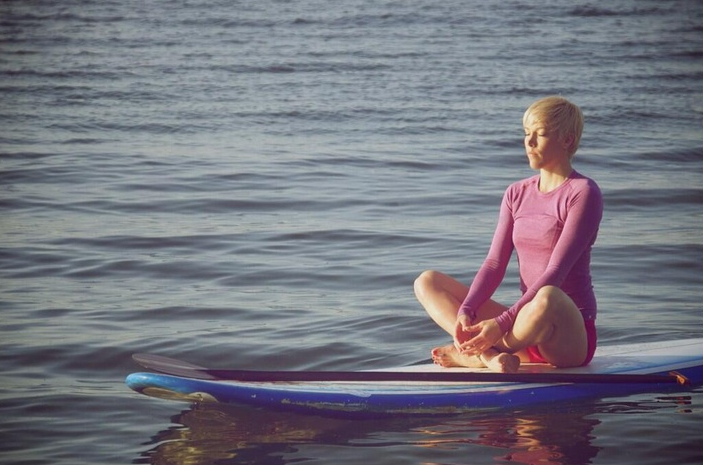
Essentially, SUP yoga involves doing the same types of yoga positions that you would in a traditional yoga class and applying them to a paddleboard surface on the water. In yoga, finding balance is a key component of the practice. And what better place to challenge your stability than standing on a paddleboard?
However, the physical component is only a surface-level part of this activity. The origins of SUP yoga come from yoga itself, a 5,000-year-old practice from Northern India, with roots in Hinduism and Buddhism. At its core, yoga is less about challenging your body and more about the mind-body connection. Therefore, when doing SUP yoga, it’s helpful to consider what a pose may be teaching you or even settle into the experience of quietly breathing.
How difficult is SUP yoga?
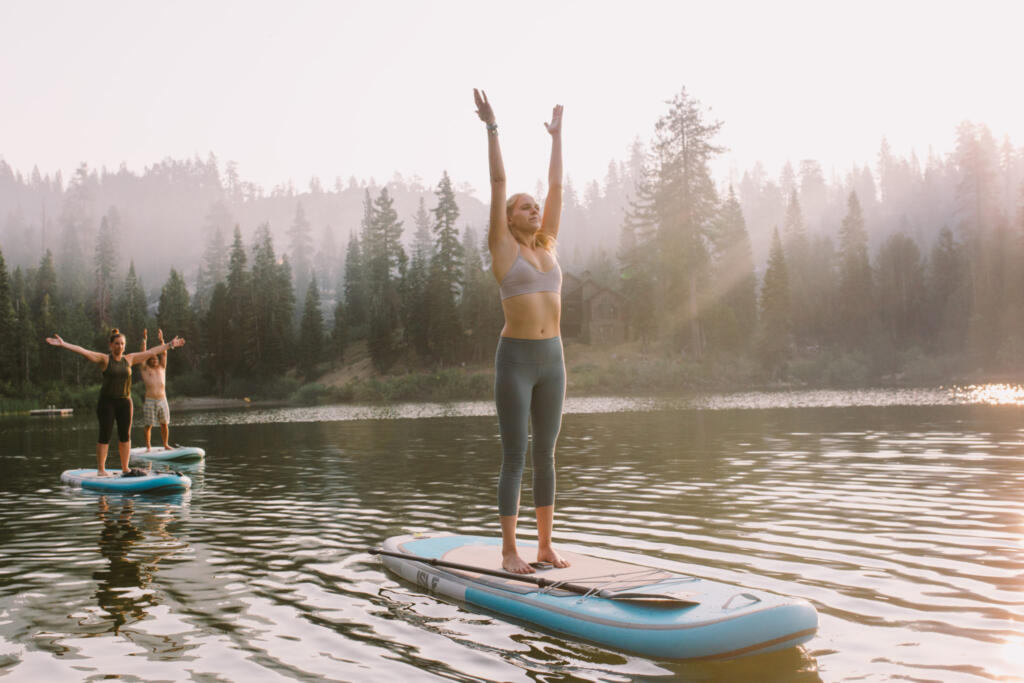
As you might expect, SUP yoga is considerably more challenging than yoga on land. You’re always grounded on a solid surface on land, whereas with SUP, you have to adjust your movements to the wind and water currents. Plus, your surface (a paddleboard) is more restricted than it would be on land. These extra challenges require a more intense sense of balance.
What equipment do I need?
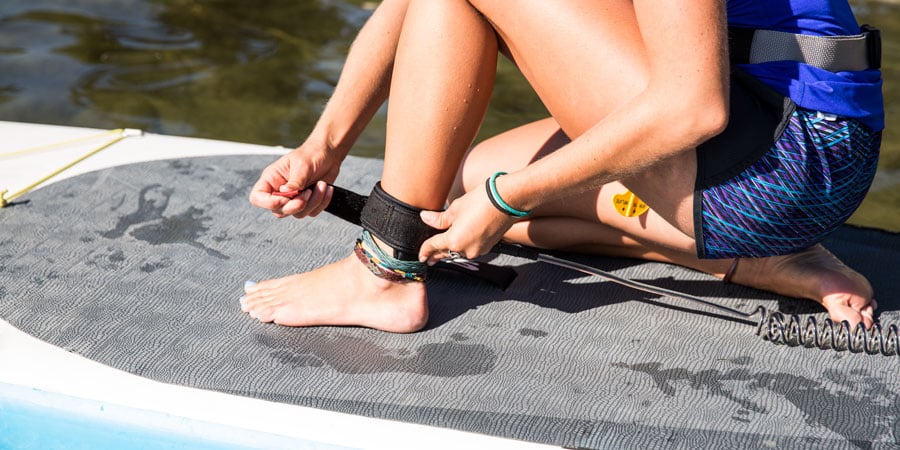
First and foremost, you’ll need a paddleboard. While there are a few different options you can choose from, a stable inflatable platform is generally recommended. This is because the thickness of the board affects its stability. You’ll also need a leash and personal flotation device (PFD) for your safety. When doing SUP yoga, it’s also important to wear proper attire. Clothes that are both stretchy and water-resistant are ideal. Bathing suits with a rashguard will usually do the trick!
What are the benefits?
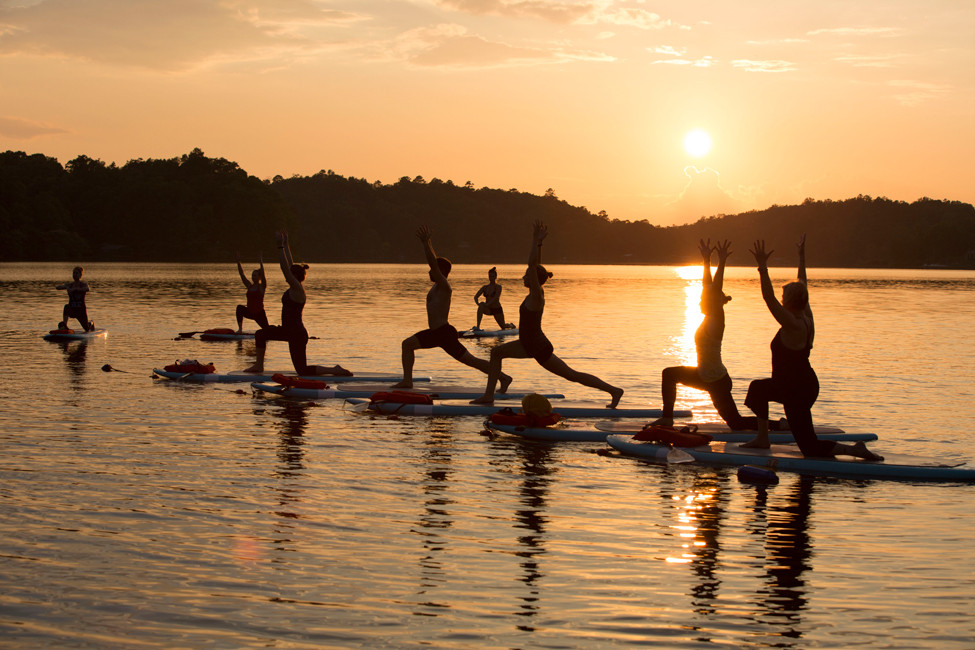
One of the most apparent benefits of SUP yoga is the joy of being outdoors. Doing yoga on the water is a unique experience that will allow you to connect with nature. In addition, the mental health benefits of being outdoors, especially near a body of water, are well-documented. With SUP yoga, you’ll get these stress-relieving benefits. Additionally, from a physical standpoint, SUP yoga practice will help you build muscles that on-land yoga won’t. It’s a full-body workout that increases your flexibility and strengthens your muscles.
How do I get started?
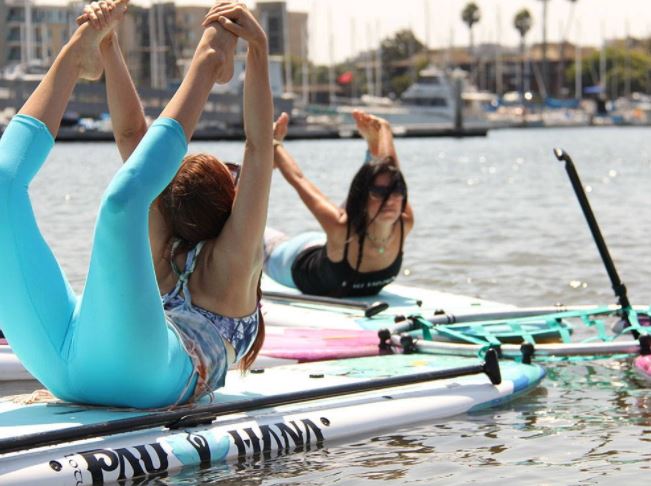
Probably the best way to get started with SUP yoga is by taking a class. If you Google search for “SUP yoga classes {insert name of your town or city}” you’re bound to come up with results. If you choose to start out on your own, the following poses are suitable for beginners: downward-facing dog, chair pose, warrior 2, boat pose, and savasana. You can also check out several YouTube videos detailing how to do these poses on your paddleboard.
If you’re looking to jump on board the trend of SUP yoga (no pun intended), we hope this information helps! And most of all, we hope you enjoy your time on the lake this summer.

